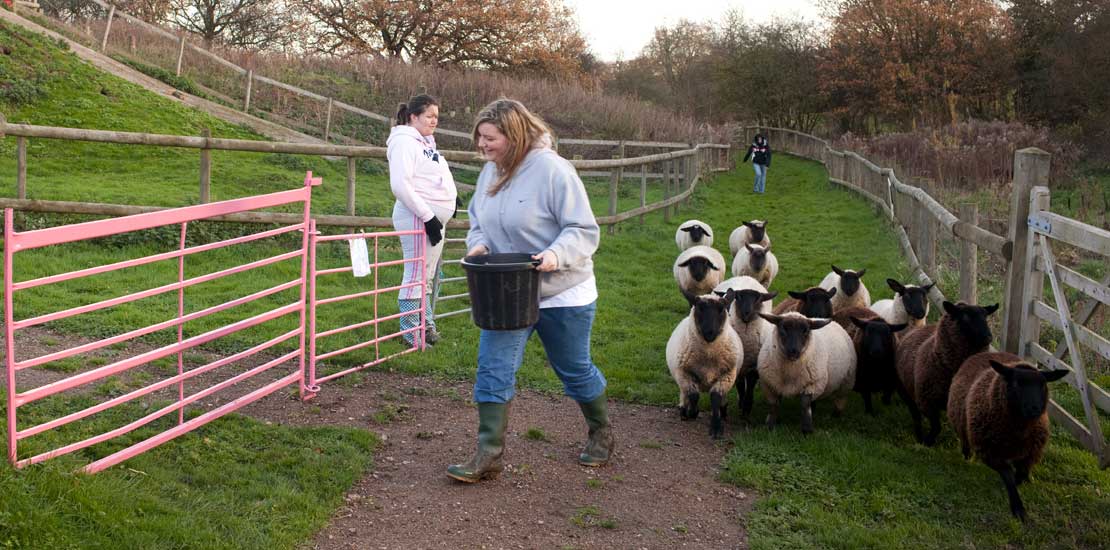Future generations at risk of losing benefit of our county farms

Council-owned county farms are in terminal decline, which means future generations of young farmers – and our communities more broadly – won’t benefit from these wonderful assets, according to a new report launched today by CPRE, the countryside charity.
County farms were set-up at the end of the 19th century to provide a way into farming for young farmers and have a huge potential to generate income, provide an opportunity to promote innovative farming methods and deliver environmentally sustainable farming to help tackle the climate emergency.
Their decline is significant with the area of county farms in England falling by over half from 426,000 acres to just under 209,000 acres since the late 1970s – as a result of privatisation, austerity and short-term thinking by governments and councils. More than 15,000 acres (7%) of council-owned farmland has been lost in the past decade alone; with 60% of this land sold off in the past two years. This alarming trend, warns the report,[1] could continue unless new legislation that protects county farms for future generations is introduced.[2]
However, the key findings from Reviving county farms, which is a report prepared for CPRE by the New Economics Foundation, Shared Assets and Who Owns England?, show that:
· more than 50% of county farm estates have disappeared over the past 40 years
· more than 15,000 acres (7%) of this has been lost in the past decade alone
· almost 60% of county farm land sold since 2010 has been in the past two years
· austerity, coupled with a sense that county farms are ‘a thing of the past’, and an unwillingness by some councils to innovate to develop new income streams or business models, is driving the decline of county farms
· councils that have taken very different approaches, leading them to protect and even expand their county farm estates, have yielded positive results
· county farms could play an important role in addressing the climate emergency and also deliver benefits to local communities, such as providing locally-grown food for near-by schools
· seven out of nine councils that responded to the survey gave details of environmental and social benefits provided by their county farms, ranging from tree planting, to local education initiatives, to supporting new farmers
Whitehall Farm’s innovative approach
Whitehall Farm is a 100 hectare farm owned by Cambridgeshire County Council and managed by Stephen Briggs on a 15-year tenancy, along with over 300 hectares of other land. Stephen has taken an innovative agroforestry arable crops approach to build the profitability, resilience and sustainability of the farm.[3]
Stephen has interplanted arable crops with 4,500 apple trees that provide an income, protect soil and also growing crops from the risk of extreme weather as a result of the climate emergency. Wildlife and birds such as tree sparrows, reed buntings, yellowhammers, English partridge and owls are also flourishing in the natural habitat farmland.
Stephen and his wife Lynn have also opened Harvest Barn farm shop and café on their county farm site. The shop sells local and certified organic fresh fruit and vegetables from the farm as well as locally sourced lamb, beef and pork, cakes and biscuits, jams and preserves.
Stephen Briggs, Farmer, Whitehall Farm, said: ‘Thanks to the county farms system, I have been able to run my own farm and try an innovative and successful soils-based farming approach. The support I have received from my local county council has been invaluable. I’d like to see all local authorities encourage new entrants with fresh ideas and perspectives like myself to go into agriculture to keep this wonderful resource in the community as a vital asset. There are economic incentives for councils too as the rent from our county farm and its innovative diversifications goes straight back to the county council, helping fund front line services.’
Graeme Willis, agriculture lead at CPRE, the countryside charity, said: ‘Whitehall Farm is a great example of a county farm having an economic, environmental and social impact. Our research shows that the number of county farms in England alarmingly continues to plummet, at a time when these wonderful assets should be protected, and invested in, to ensure they’re available for future generations.
‘CPRE is calling on the new government to introduce legislation to stop the sale of county farms and to give them a new purpose. A package of measures and new funding to enable councils to enhance, invest in their estates and better promote them is urgently needed. CPRE wants to see county farms recognised locally and nationally for their potential to address the climate emergency and deliver wider public benefits to meet the needs of their communities.’
Kate Swade, report co-author, said: ‘The sell-off of the county farms estate is a national tragedy, squandering a public resource that is crucial to getting fresh blood into farming. Enough is enough: it’s time the new government halted the sale of county farms and invested in them properly for the future.’
For further information contact Media Relations Lead, Faith Mall FaithM@cpre.org.uk or call 020 7981 2819/ 077 3933 2796.
Notes to editors
1. A copy of Reviving county farms can be downloaded here
2. Chart of change in county farms area by authority, 2010-2018 (land area of 500 acres and above)
3. New Model Farming https://www.cpre.org.



